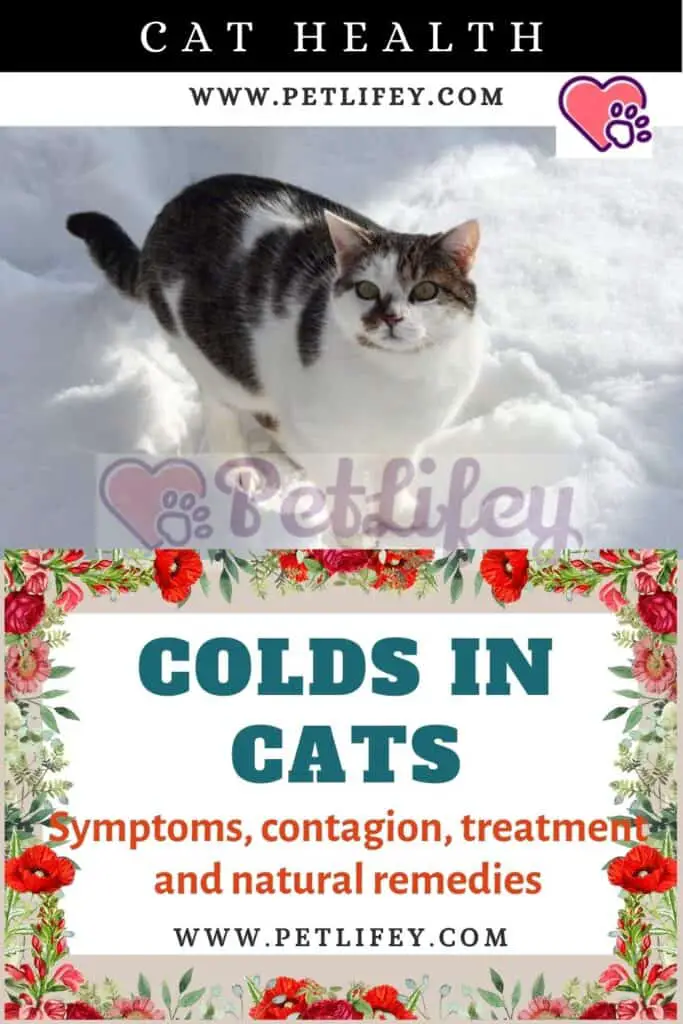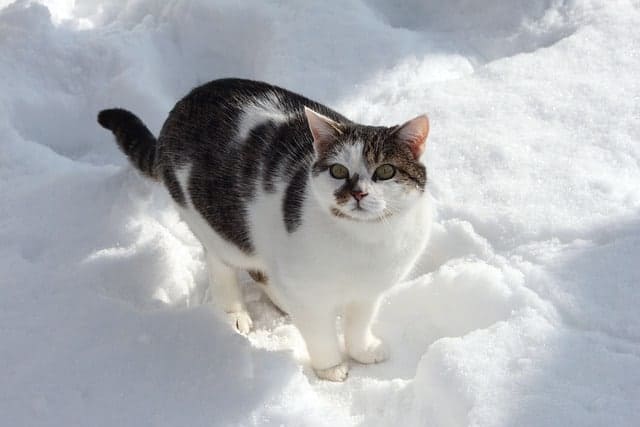A cold is a very common inflammation of the respiratory tract in cats: here’s what you need to know about the symptoms, the possibility of contagion and how to treat it.

Among all the diseases that can affect the respiratory system of the cat, the most common is probably the seasonal ailment par excellence: with the approach of the autumn season first, and then of the winter it is very easy to suffer from sudden changes in temperature and end up with a cooled cat.
This very common and widespread pathology, also called rhinotracheitis, has easily recognizable symptoms and can be treated in a rather simple way: however, unlike what happens in humans, colds in cats should never be taken lightly and we must intervene. quickly with the necessary precautions.
The cat has a cold: what to do and what to avoid?
If the cat is cold it means that there is an inflammation of the feline respiratory system: it can often happen in cold seasons, for example due to sudden changes in temperature or when the cat goes out in the rain and gets wet.
As with a dog with a cold, cat rhinoracheitis must also be treated in an appropriate and timely manner to prevent it from turning into something more serious: for this reason it is essential to learn to recognize the symptoms of colds in cats and know when to contact the vet and more generally how to help our four-legged friend to feel better.
Cold symptoms in cats
The Cat Cold symptoms are not so different from those that we can find even among people: observing your cat can understand very easily if you are incubating the virus and calculate how to move to lend the necessary treatment.
A cold cat will have a runny nose and will tend to sneeze several times throughout the day. Furthermore, as often happens when the cat is not feeling very well, it will tend to eat little and to stay holed up in a hiding place chosen for the occasion.
Sneezing is an opportunity to free the nose from a copious amount of mucus, which in many cases is thick and accompanied by the presence of pus. The nose of a cat with a cold then becomes irritated and cracked. The cat’s red eyes also indicate the presence of a cold, along with tears and sometimes purulent discharge.
In some cases, the cold cat will also have a cough and some fever line : to know for sure, take its temperature following the instructions in our article “How to measure a cat’s fever” .Is cat cold contagious to people?
Is cat cold contagious to people?
The topic of the possibility of contagion deserves a separate study : often the cat shares many spaces with the human being as for example in the case of cats used to sleeping in bed with their owner.
This, on the surface, may seem like a problem in terms of contagion: however, even if the symptoms of colds are similar between cats and humans, the cat cannot infect the owner with its sneezing. The feline cold, in fact, is caused by different viruses than those that can infect humans.
Colds in cats: when do you need a vet?

As previously mentioned, the cold is a very common disease in cats and in itself not very dangerous and easily treatable: however, it is essential not to neglect it because it could lead to much more serious and dangerous diseases for the cat’s health.
When you notice the first symptoms, you can wait a few days to understand if the feline cold emergency can go back on its own: initially, therefore, let’s leave the cat alone and don’t force it to play, to come out of its hiding place or to eat. Peace of mind is key to helping a cat heal!
Let’s make sure, however, that he always has fresh water available and drinks enough, because it is important that he remains well hydrated: the risk we run is that of running into cat dehydration problems .
If we can’t get the cat to drink enough water, let’s try wetting his kibble or substituting the cans for dry food for a while.
If there is no fever and the cat eats and drinks enough, it is possible to wait a couple of days.
If, on the other hand, the symptoms do not subside within 3 days, or if we are dealing with a puppy or an elderly cat, it is important to contact the veterinarian.
How to take care of a cold cat
Usually, the veterinarian prescribes a drug treatment based on medicines of various types: antibiotics, anti-inflammatories and antihistamines.
You must be very careful to follow the doctor’s instructions precisely and above all to never give medicines for human beings to the cat because many are absolutely toxic for him.
To relieve cat discomfort due to irritation of the nose and eyes, it is advisable to pay attention to cleaning: use a clean and slightly moistened cloth to rub the nose and eyes, in order to gently remove any secretions.
Another thing not to be underestimated is the surrounding environment: check that there are no drafts, that the temperature is adequate and that the house is well humidified to help the cat breathe better. During the winter, put the special containers of water on the radiators and add some essences with a vasodilation effect (for example, chamomile or eucalyptus).






